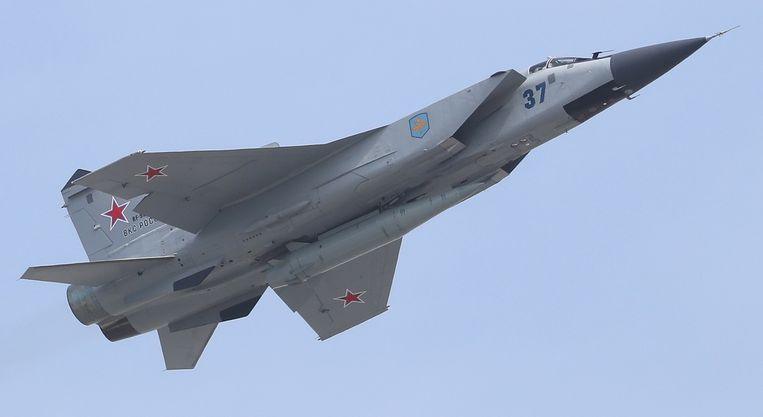At the presentation almost five years ago, Russian President Vladimir Putin called the Kh-47M2 Kinzhal (“dagger”) one of Russia’s “new generation weapons”. The missile has now been fired at Ukrainian targets a number of times. The Kinzhal is supposed to show the high-tech side of the Russian army, which is plagued by numerous problems during the war.
After launch, the rocket quickly reaches a speed of Mach 4, almost 5,000 kilometers per hour. According to Russia, the Kinzhal will then be able to approach an important target at Mach 10, more than 12,000 kilometers per hour. “Nobody noticed us,” Putin said in 2018 at the presentation of the hypersonic weapon and five other new missiles. He was referring to the West, which doubted that the Russian army could modernize. “Well, listen to us now,” Putin said triumphantly.
Only, how good is the Kinzhal really? More importantly, are the Russians actually deploying the ‘superweapon’? Only a few countries are now working on hypersonic weapons, which are called the ‘weapons of the future’. In addition to Russia, these are the US, China and North Korea. With these weapons the enemy can be surprised very quickly. Due to the enormous speed and maneuverability in flight, hypersonic weapons are difficult to take down by air defenses.
War debut
This became apparent again on Thursday with the missile shower. Ukraine said it shot down 34 of Russia’s 84 missiles, but not one of the six Kinzhals was shot down. “We have no defense against these types of weapons,” said an Air Force spokesman. This is probably also the reason why Russia, which is suffering from an acute shortage of high-tech missiles after a year of war, deployed so many Kinzhals at once. So far only a few have been fired per attack.
The hypersonic weapon made its wartime debut as early as the first month of the war. Russia then said it had attacked an underground weapons depot in western Ukraine and a petrol depot. After that, the Kinzhal was used a few more times, including against targets in the port city of Odesa. The missile has a range of 2,000 kilometers and is safely fired from Russia by warplanes or bombers.
The US, which unlike Russia and China does not yet have an operational hypersonic weapon, has been following the Kinzhal launches closely ever since. “It’s almost impossible to stop them,” President Joe Biden said after the initial strike. But the Americans are not impressed by the Kinzhal missiles. “Their deployment has not fundamentally changed the conflict,” Defense Secretary Lloyd Austin said in May last year, after 12 had been fired in several attacks.
Bad planning
The choice of targets also meant that the Russians could not leave their mark on the war with their hypersonic weapon. The Kinzhal is equipped with an explosive charge of 480 kilos and was developed to quickly destroy high-value military targets: headquarters, ships, weapons depots, airfields and command centers. However, the Russians did not always use the weapon to take out these types of high-value targets.
The Defense Ministry in Moscow claimed on Thursday that, in addition to power plants, “important parts of Ukraine’s military infrastructure,” such as munitions factories, had been hit by the missile shower. According to Kyiv, they were mainly power plants.
“Russia’s missile deployment has been less effective and decisive in helping achieve the war’s objectives than leaders in Moscow probably expected,” defense expert William Alberque of the International Institute for Strategic Studies (IISS) said in an analysis Monday. According to Alberque, this is partly due to poor planning of the attacks and limited intelligence about the intended targets.

